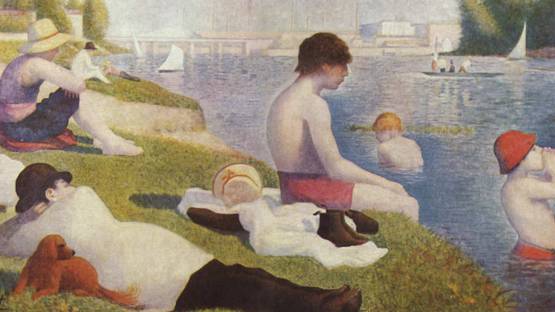
Who is Georges Seurat? School, Childhood, Interests
Georges Seurat was French painter who founded the famous theory and practice of 19th century Neo-Impressionism. He popularized the technique of using light with tiny brushstrokes, which eventually became “Pointillism”. Some of his works include ‘Une Baignade’, Asnieres’ and ‘A Sunday on La Grande Jatte’.
Georges Seurat was born on December 2 1859, in Paris, France. He belonged to a wealthy family, and this allowed him to thrive in his art. His father was a legal official. As a kid, he used to spend his spare time in the garden with his mother.
The people who visited him and these places became the subject to many of his greatest paintings. Seurat took an interest in painting from a very early age and studied some great artists’ works like the French sculpture Justin Lequien.
For his education, he attended the Ecole des Beaux-Arts in 1878. He excelled in his studies and was an intelligent child who kept to himself after he served a year in the military, he returned to Paris. Thereon, he began to improve his art skills.
For the next two years, he mastered the art of black and white drawings. His parents supported him, which helped Seurat to paint and freely explore different areas of art.
Some Greatest Works by Seurat, Brothers at Asnieres’
Seurat’s greatest work was created in 1883. It was called ‘Brothers at Asnieres’. It was a large painting of people relaxing near the water at Asnieres. He submitted this painting to the official French art exhibitions, the Salon. But the Salon rejected his work. Later, he joined the society of Independent Artist. There, he painted the first of the six large canvases which established his art career.
During this time, Seurat explored different art styles. In the mid-1880s he began to use the science of optics and color in his art. Instead of mixing the paint on the canvas, he experimented by placing tiny dots of different colors next to each other on the canvas.
He called this painting style “Divisionism”, which was later called “Pointillism”. This technique made colors appear brighter. In 1984, he met Paul Signac, who became a good friend and chief disciple of Seurat’s. They both used the same method of pointillism in their art.
Masterpiece by Seurat, La Grande Jatte, Impressionist exhibition
In 1884, Seurat created another masterpiece. It was a huge painting called ‘Sunday Afternoon on the Island of La Grande Jatte’. It was also reflected the technique of pointillism. This iconic piece was painted on a ten-foot wide canvas and displayed as the centerpiece at the last Impressionist exhibition. Many people viewed the work up close and failed to see it whole.
The painting became the most famous image of the 1880s, and he revived the Impressionist movement as it had started to decline. He painted the entire painting with only small dots of bright and pure color. For his piece, he used the same inspiration again, the popular boating place of Asnieres. However, this time, he focused on the island of La Grande Jatte.
Paris, and met many Famous Artists, Vincent van and Edgar Degas.
Owing to the complexity of the art, it took him two years to finish this project. The painting became the taking point of the exhibition. Most people were amazed by Seurat’s art and a few criticized it. But, it made Seurat one of the most significant artists in Paris.
In his later years, he continued to paint in the pointillism style. He also tried using lines in his art. He believed that different types of lines would express different types of emotions. He also became friends with other post- impressionist artists such as Vincent van Gogh and Edgar Degas.
Love Life and Death
Seurat lived with a young model, Madeleine Knobloch for most of his life. In 1890, they had a son. In his last few months, he worked on his final artwork, ‘The Circus’. It was left unfinished, but as if thorough some premonition, he decided to present it at the eight Salon des Independents. Seurat died very early, on March 29, 1891, at the age of 31 in France. Seurat left in the art world with his few ideas and concepts for the use of colors.
